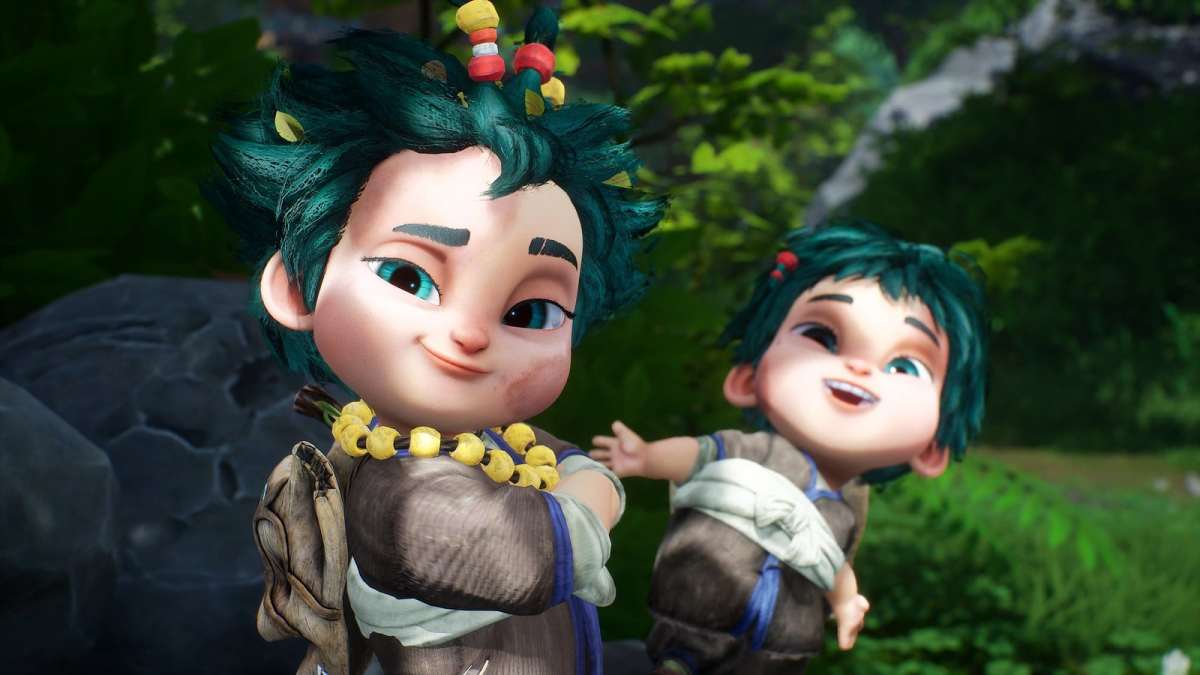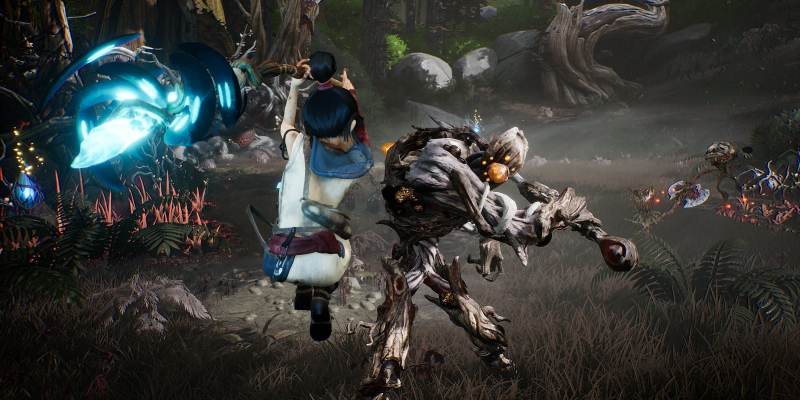I thought my days of being left in stunned silence by the visuals in a game were behind me. Don’t get me wrong — I’m constantly amazed at the technical artistry our medium has to offer. The tranquility of riding across the plains in Red Dead Redemption 2, the views as I climbed up a plate in Final Fantasy VII Remake, and pretty much every single second of Ghost of Tsushima are nothing short of marvels. But I’m talking about that stunned feeling of playing the demo for Super Mario 64 for the first time in the summer of 1996 and not quite being able to wrap my head around this new 3D playground that Nintendo had created. It felt like a paradigm shift. But then I played through about 10 hours of Kena: Bridge of Spirits this past weekend, and it was the one of the closest feelings I’ve had to that awe I experienced 25 years ago.
While the gameplay itself can’t quite keep up with the staggering visuals — which if I’m being honest, seemed like an impossible task from the start — Kena artfully unravels a world that I want to explore as slowly and thoroughly as possible, simply because I don’t want it to end.
Kena: Bridge of Spirits was revealed alongside the PlayStation 5 last summer. Coming from the small team at Ember Lab, a studio previously known for creating commercials and short films including a fantastic Majora’s Mask short from a few years back, Kena quickly became synonymous with the visual leap of a new console generation. Which is fitting, because playing through the opening hours kept reminding me of a launch game for a new console, and I don’t mean that in a bad way. Whether it was navigating a dark forest in the midst of a raging thunderstorm, wandering through the memories of a burning village, or the countless times I swung the camera around after a long trek to see just how much distance I’d covered, the game is crammed with memorable moments.
You play as Kena, a spirit guide who helps lost souls complete their unfinished business in the hopes of finally being able to move on to whatever’s next. It has elements that you’ve probably seen a dozen times before in films like Spirited Away, games like Spiritfarer, and other things that most likely have the word “spirit” in their title. The story is told through a mix of in-game events, short conversations, and gorgeous cinematics that are well written, expertly performed, and backed by a fantastic soundtrack.
So much of Kena: Bridge of Spirits is wrapped in a warm blanket of familiarity. Making your way through the dark caverns of the opening area, only to find yourself greeted with a triumphant view of the vibrant world as far as the eye can see, brings the same rush of adventure as that early moment in The Legend of Zelda: Breath of the Wild where Link gazes out at Hyrule for the first time in a century. It’s shortly after this point that you begin slowly amassing a small army of Rot, adorable little creatures that look like the Soot Sprites from My Neighbor Totoro crossed with Pikmin.
The Rot constantly exude personality and playfulness. They bum around the environment, find little nooks and crannies to curl up in, and share in the same curiosity as I do as the player. They’re kind of like cats in that regard, except that I’ve collected over 50 of them and nobody has called animal protection services on me. They can be used in combat to distract and attack enemies and ultimately are your vessel for purifying corrupted parts of the world. They also come in handy for certain puzzles, like reuniting broken pieces of a statue back to its original form. That said, given the aforementioned Pikmin comparison, I was hoping for a bit more depth, creativity, and experimentation with the Rot that I simply haven’t found yet.

Kena’s movement and leaping feel a touch stiff compared to in other recent 3D platformers like Super Mario 3D World, Ratchet & Clank: Rift Apart, and Psychonauts 2. Your double jump doesn’t have quite the right amount of inertia behind it, and the occasional swimming segments can be a slog — but it never feels outright bad. The same goes for the combat, which pits you against an increasing handful of gorgeous-looking but kind of mechanically boring enemies that you can usually pummel into submission by spamming your melee attack and peppering in some Rot-infused special moves.
Exploration, combat, and puzzles open up a bit as you gain new abilities that can be used across all of these situations, like a magical bow and arrow or a bomb that momentarily disrupts time and space. Each weapon can be upgraded a bit using experience points, but there’s no real sense of a power curve in my time so far. It’s a similar situation for the Rot themselves, whose main growth comes in the form of a wealth of cosmetic hats you can find and purchase, transforming yourself into the Pied Piper of the weirdest crew of cute critters imaginable.
While the individual mechanics might not stand out on their own, Kena feels like so much more than just the sum of its parts. It manages to wrangle all of these elements together into a gameplay loop that I’m finding incredibly satisfying, and a deep desire to see the world cleansed and transformed back into its vibrant self is keeping me completely motivated to keep playing.
I love entering a new area drained of life, infested with enemies, and covered in corrupted muck, knowing full well that I’d be spending the next hour or two slowly completing challenges that rejuvenated the world. Dead trees blossom back to life, poisoned rivers return to their pristine beauty, and color comes back to the world, one piece at a time. Seeing this natural rebirth as a sign of my own progress reminded me a lot of the rejuvenation of Okami and the altruism of Death Stranding. And given how much I adore those two games, it’s safe to say that Kena: Bridge of Spirits is in good company.
